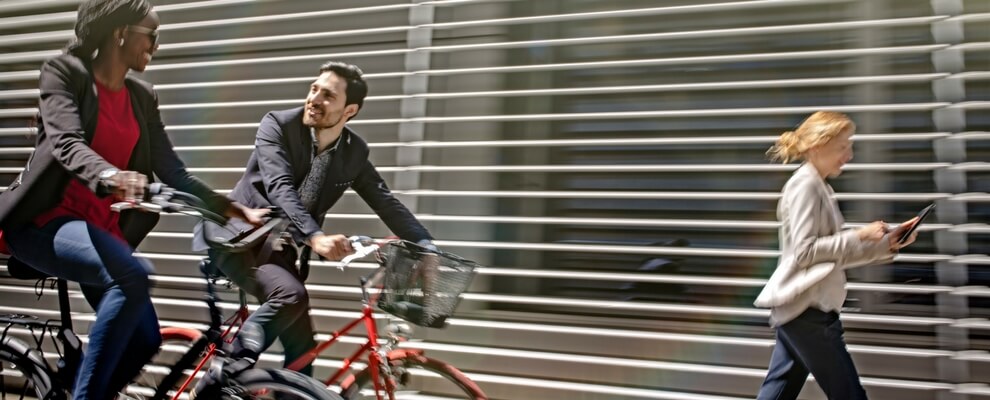Top ten tips to get active - without costing you a fortune
Heart Health -
Regular physical activity is an important contributor to our overall good health, promoting healthy weight and reducing the risk of chronic disease. In Australia, however, nearly 70% of adults report being sedentary or having low levels of physical activityi.
Physical inactivity is the fourth leading cause of death due to non-communicable disease (such as heart disease, stroke, diabetes and cancers) worldwide, contributing to over three million preventable deaths each year. In Australia, physical inactivity is the second greatest contributor (behind tobacco smoking) to the incidence of cancer.
Australia's Physical Activity and Sedentary Behaviour Guidelinesii recommend adults be active on most, preferably all, days of the week. The guidelines recommend a weekly total of 2½ to 5 hours of moderate-intensity exercise, as well as strength-training activities twice a week. It also recommends breaking up long periods of sitting as often as possible.
Many people find that time and cost are barriers to being more physically active. The good news is that there are plenty of affordable, easy ways to increase your daily activity. Here are my top ten:
- Choose an active way to travel: Walking or cycling can get you where you need to be, while increasing your activity levels. A recent studyiii found that cycling to work was associated with a lower risk of cardiovascular disease, cancer and all-cause mortality. In the same study, walking commuting was associated with a lower risk of cardiovascular disease. Too far to walk or cycle? Try getting off the bus or train a stop early or park your car further away to get a few extra steps.
- Move more, sit less: There’s emerging evidence that shows a link between sitting for long periods and the risk of chronic diseases including heart disease, type 2 diabetes, high blood pressure, stroke and premature mortality, even in physically active adults i, ii, iii, iv. Try to break up your sitting time by getting up and moving regularly. Stand during meetings at work and for short commutes on public transport, have a walking meeting, take the stairs instead of the elevator, and move things like rubbish bins further away so you need to get up.
- Choose active ways to spend time with family and friends: The most recent Australia Health Survey found that sedentary activity occupied an average 39 hours a week for adults and, on average, children aged 5–17 spent over two hours a day in screen-based activity, with physical activity decreasing and screen-based activity (like watching TV or a computer screen) increasing with age. Try choosing active ways to spend time with family and friends: head to the park or beach to kick a ball or throw a frisbee, take a walk before sitting down for coffee, or head to the local pool for a swim.
- Become community minded: There are lots of opportunities to get active within your community, and meet new people. Your local council or neighbourhood or community centre will often host free or low cost group exercise programs like walking groups, yoga, aerobics or Tai Chi. Some local parks are equipped with outdoor gyms, cycling paths or community gardens – all great ways to be more active. Check your council website to see what’s available.
- Head outdoors: We’re fortunate to have a great climate and natural environment here in Australia. Head out for a bushwalk and some fresh air in our beautiful national parks, state forests or coastal areas.
- Work it: While housework and gardening may not sound appealing, they can be great ways to get active – and clean your home! Play some tunes to increase your pace, and enjoyment.
- Motivate yourself on your mobile: Most mobile phones have a health app that tracks the steps you take each day. Check it out and aim for 10,000 steps each day. There are also lots of free exercise and yoga apps around to help you workout at home.
- Check out free offers: It’s important to find an activity that you like: it will make a regular exercise program much easier to stick to. Many fitness facilities and studios offer free or discounted trial periods, so you can try new things without a long term commitment.
- Break it up: At times, it can be hard to find enough time for physical activity within your day. Try breaking it up into 10 minute spurts, at least three times a day.
- Get the all clear: If you haven’t exercised in a while or are recovering from a health condition, it’s important to see your GP to get a medical clearance. Your GP can give you advice on what exercise is appropriate and may be able to provide you with links to exercise programs, groups, and facilities.
- Australian Bureau of Statistics (2013), 4364.0.55.004 - Australian Health Survey: Physical Activity, 2011-12. Canberra: ABS
- Australian Government, Department of Health (2014) Australia’s Physical Activity and Sedentary Behaviour Guidelines, Canberra: Department of Health
- Celis-Morales,CA, et al., Association between active commuting and incident cardiovascular disease, cancer, and mortality: prospective cohort study, BMJ 2017;357:j1456
- Proper KI et al., Sedentary Behaviors and Health Outcomes Among Adults; A Systematic Review of Prospective Studies, Am J Prev Med 2011; 40(2):174 –182
- Healy GN, Matthews CE, Dunstan DW, et al. Sedentary time and cardio-metabolic biomarkers in US adults: NHANES 2003–06. Eur Heart J 2011;32:590–7
- Van der Ploeg HP et al, Sitting Time and All-Cause Mortality Risk in 222 497 Australian Adults, Arch Intern Med. 2012;172(6):494-500
- Choi BK et al. Sedentary work, low physical job demand, and obesity in US workers. Am J Ind Med. 2010; 53(11):1088-1101
The above health information is general information only and is not a substitute for advice from a qualified medical or other health professional. Always consult your general practitioner or medical specialist before changing your diet, starting an exercise program or taking medication or supplements of any kind.
